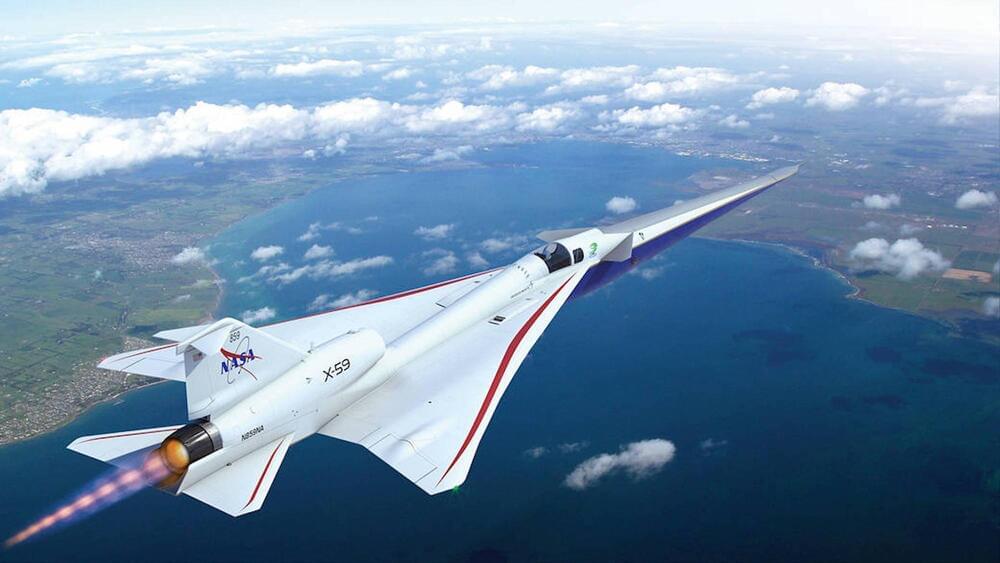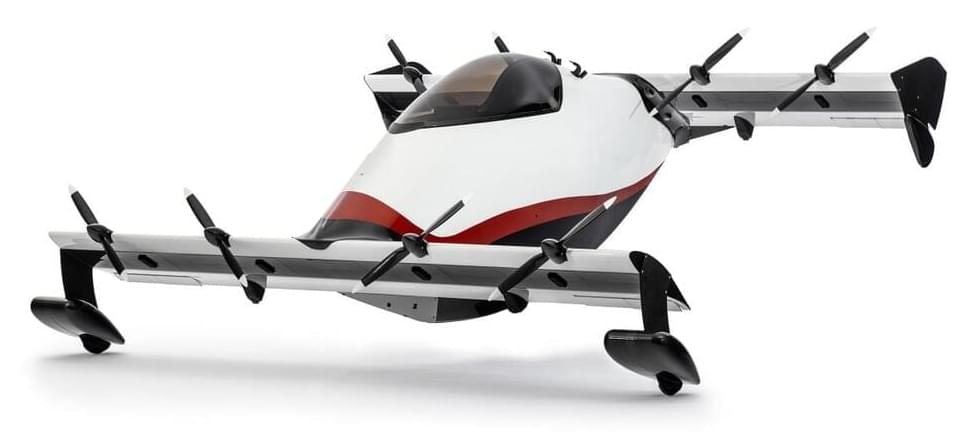Jan 10, 2024
NASA plans to unveil experimental X-59 supersonic jet on January 12
Posted by Genevieve Klien in category: transportation
The cutting-edge plane aims to generate a 75 decibel ‘sonic thump’ instead of a sonic boom.

The cutting-edge plane aims to generate a 75 decibel ‘sonic thump’ instead of a sonic boom.
While already deployed for the likes of NASA and ESA for several years, Zeiss’ hologram-generating Multifunctional Smart Glass technology is only now gearing up for mass production. The results could be interesting.
Zeiss’s Multifunctional Smart Glass has been a core and expensive bespoke component of space missions for some years now, the tech having been developed primarily for deployment with the likes of NASA and ESA that can afford it for mission-critical uses. Calling what it results in a hologram is a bit of a cheat — these images don’t float free on their own; instead, they’re generated within a thin, transparent layer sandwiched between glass sheets to which ultra-high-precision optics are attached.
Still, the effect is convincing. The image layer is 92% transparent. Zeiss reckons the holographic functionality can turn any glass surface (windows of buildings, transparent screens, side windows of vehicles, etc) into an on-demand communication screen.
China is taking a new innovation to trial.
China’s innovative move: trials for a two-way charging system in major cities next year. Explore how electric vehicles might soon support the grid.
Volkswagen is bringing back physical buttons and control switches to its new batch of cars after customer complaints.
Honda Zero includes two concepts: the sleek, sedan-like Saloon, and a boxier big-booty van-thing called the Space-Hub.
Honda announced a new global electric vehicle series, dubbed Honda Zero, presenting it as an antidote to the recent trend of “thick, heavy” EVs seen on the road today.
Honda released two concepts for its new Honda Zero series.
There was a flurry of activity towards the end of the year as large corporations look to establish local HQs. Other firms that have recently received such licenses are Airbus SE, Oracle Corp. and Pfizer Inc.
Saudi Arabia announced the new rules for state contracts in February 2021, saying it wanted to limit ‘economic leakage’ — a term used by the government for state spending that can benefit firms that don’t have a substantial presence in the country.
A key part of Crown Prince Mohammed bin Salman’s economic agenda has been to limit some of the billions in spending by the government and Saudi citizens that leave the country each year. Government officials want to stop giving contracts to international firms who only fly executives in and out of the kingdom.

California-based startup Opener has been developing eVTOLs since 2011, when founder Marcus Leng flew a proof-of-concept aircraft that he had constructed himself (using wooden chopsticks as part of the build).
Startup Pivotal has unveiled the Helix eVTOL, a one-seater aircraft it plans to begin selling for $190,000 in 2024.
Following a door panel being ripped off a Boeing 737 MAX 9 midflight, US regulators are investigating 171 potentially affected planes.
Verge Motorcycles’ 360-degree sensors could make the wild TS Ultra safer than anything else on two wheels.
Modern cars are riddled with sensors looking in every direction, most taxed with one simple duty: keep you safe.
All those cameras aren’t cheap.
Continue reading “The hubless electric motorcycle with sci-fi style and a great name” »
It is well-reported that solution-processed nanosheets tend to restack during deposition57. We determined the degree and nature of this restacking by measuring the nanosheet length and thickness in the ink (lNS, tNS) using AFM, as well as the aggregated nanosheet dimensions in the network (lNet, tNet) post-deposition. The restacked nanosheet length and thickness were measured from network cross-sections using the Ridge Detection plugin in FIJI50,58 (Fig. 2e, inset, and Supplementary Note 9). We define the aggregation factors in nanosheet length, χl, and thickness, χt, as \({\chi }_{{{{{\rm{l}}}}}}={l}_{{{{{\rm{Net}}}}}}/{l}_{{{{{\rm{NS}}}}}}\) and \({\chi }_{{{{{\rm{t}}}}}}={t}_{{{{{\rm{Net}}}}}}/{t}_{{{{{\rm{NS}}}}}}\) respectively. Values of χl ≈ 1.5 and χt ≈ 5.6 were found for the printed LPE graphene network in Fig. 2e. This is in agreement with a value of χt ≈ 5 reported for vacuum filtered WS2 networks59, and suggests that nanosheets primarily aggregate through vertical restacking with maximised basal plane overlap.
By isolating discrete nanoplatelets and noting their orientation (Fig. 2f, inset, and Supplementary Note 10)60, the distribution of angles, φ, between each nanoplatelet’s normal vector and the out-of-plane (y) direction was calculated. The data in Fig. 2f was fit with a Cauchy-Lorentz distribution centred on φC ≈ −0.6˚, which suggests the nanosheets are primarily aligned in the plane of the film. The full width at half maximum (FWHM) of the distribution provides an estimate of the degree of alignment about φc in the network61. The FWHM of (29 ± 1)˚ for the spray cast network in Fig. 2f is comparable to a value of 21˚ for an inkjet-printed graphene film measured using AFM. In addition, we measured the Hermans orientation factor62, \(S=\left(3\left\langle {\cos }^{2}\varphi \right\rangle-1\right)/2\), to be 0.61 ± 0.07 for the network, which is consistent with partial in-plane alignment. A value of S = 1 would imply the nanosheets are perfectly aligned in the plane of the film, while S = 0 for randomly oriented nanosheets. This is in broad agreement with a value of S = 0.79 for a vacuum filtered Ti3C2Tx nanosheet network measured using wide-angle X-ray scattering (WAXS)32.
The physical properties of 2D networks are known to scale with nanosheet size63,64. Here, we use FIB-SEM-NT to systematically study the morphology of printed LPE graphene networks for various nanosheet lengths, lNS. Size-selected inks were produced using liquid cascade centrifugation65, characterised by AFM (Fig. 3a) and spray-coated into networks. Reconstructed 3D volumes for networks of two different nanosheet sizes in Fig. 3b show noticeable changes in network morphology as lNS is decreased from 1,087 to 298 nm. Analysis reveals a clear decrease in network porosity from 51% to 39% with decreasing lNS (Fig. 3c), with a corresponding reduction in the characteristic pore size, ζ \(=\sqrt{A}\), in Fig. 3D. The pore circularity data similarly exhibits a dependence on lNS (Fig. 3e), where networks of smaller nanosheets have more circular and compact pore cross-sections. This implies that printed networks comprised of smaller nanosheets are more densely packed, which has been linked to improved charge transfer in graphene films66. Alternatively, networks of larger nanosheets are more open and porous, facilitating enhanced electrolyte infiltration and mass transport. Taken together, the data in Fig. 3c-e suggests that changing the nanosheet size offers a simple means to tailor the network porosity for a target application. FIB-SEM-NT can be used to inform this by measuring pore sizes that span from a few nanometres to microns.